WIDOW SKIMMER
Libellula
luctuosa
|
|
Widow Skimmer is a very attractive large
dragonfly. Males perch conspicuously near water and defend territories
with a low, butterfly-like flight. Note the male's distinctive
tri-patterned wings: dark at the base, a broad white band in the
center, and clear at the tips.
|
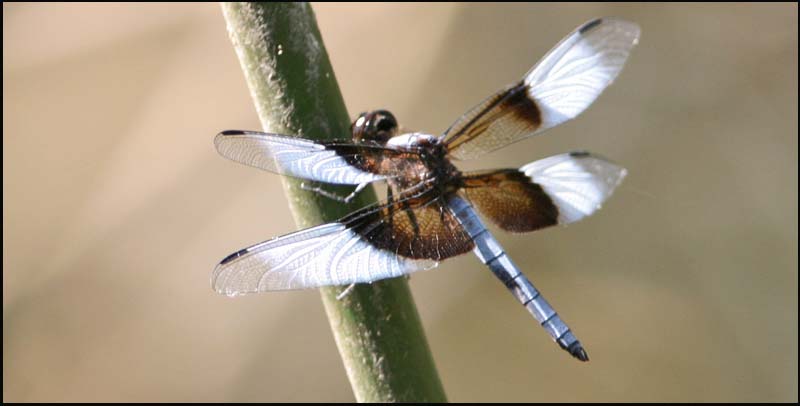
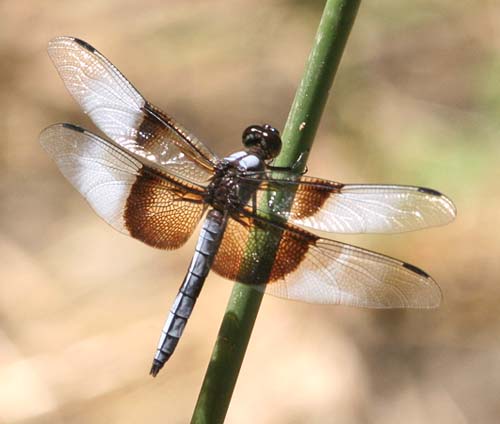 |
Widow Skimmer was the first dragonfly that
caught my attention enough to look it up in a field guide. Not only are
the wings beautifully patterned, but the abdomen and much of the top of
the thorax is covered with pruinose blue. Note also the very dark eyes.
The dark color at the base of the wings can
vary in intensity, even wing to wing, but the overall pattern remains
the same despite the variation in saturation.
Photo (top two & below)
24 July 2006 Arroyo Seco Lakes
Photo (left) 5 Aug 2006 Arroyo Seco Lakes
|
|
|
Widow Skimmers may perch horizontally or
vertically (male; right). Females (next two photos below) lack the
males' blue pruinescence but show a 'ghost' pattern of the males'
tri-colored wings. However, many females (and some males) have dusky
tips to the wings of varying intensities. The two females (below) have
quite different saturations to the dark wing tips.
Photo (right & below) 24
July 2006 Arroyo Seco Lakes
Photo (2d female below) 5 Aug 2006 Arroyo Seco Lakes
|
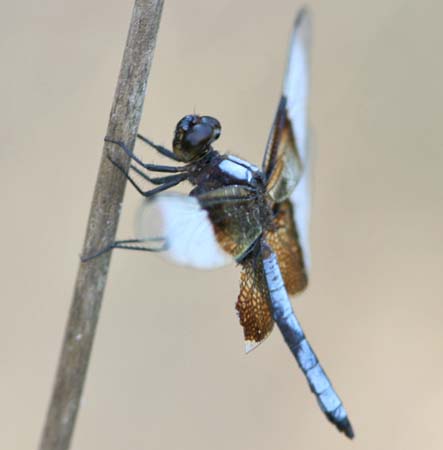 |
|
|
|
|
|
|
An important field character on female Widow
Skimmer is the broad yellow stripes along the sides of the abdomen that
merge atop the base of the abdomen and continue forward across the top
of the thorax. The pale or yellow abdominal stripes of other female
skimmers do not merge, nor carry on over the top of the thorax.
Photo (right) 12 Aug 2006
American River, SAC
Photo (below) 24 July 2006 Arroyo Seco River
|
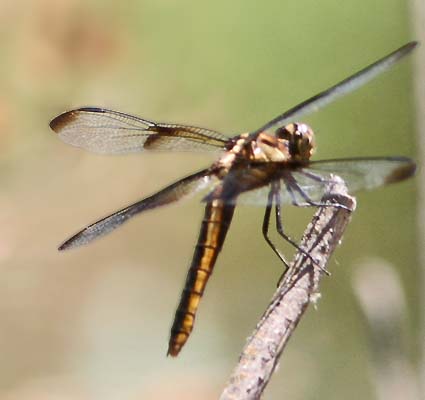
|
|
| One risk of having differentially patterned wings
is that they can wear unevenly, and can break at color breaks, as did
one of the lower wings on the male below. Dragonflies in general live
very short lives in adult stage, and they do wear out fast in the
summer sun. |
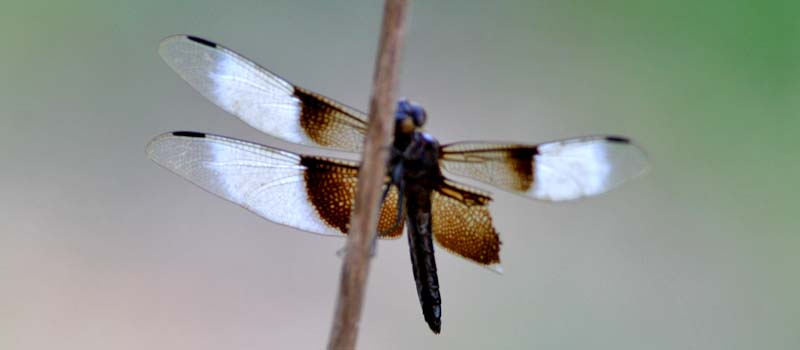
|
|
Interestingly enough, although MTY records of
Widow Skimmer go back to 1974, all the known records from the county
are from the Arroyo Seco Lakes, adjacent to Arroyo Seco campground.
These two small lakes are edged with extensive tules, favored by this
species. At times in July-August, they can be quite common (e.g.,
40/visit). Time and further explorations will tell whether Widow
Skimmer is actually an extremely local species or not.
This dragonfly is distributed across much of the
United States but is a recent immigrant to northern California, not
appearing here until after 1900 (Manolis 2003). It often prefers
artificial bodies of water (like farm ponds or reservoirs), and spread
north with man-made habitat alterations. The Arroyo Seco Lakes, though,
are apparently natural in origin.
|
|
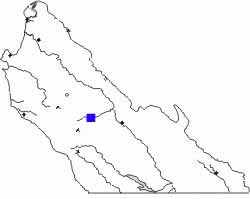 The map shows the only currently known
location for Widow Skimmer in MTY: Arroyo Seco Lakes. It seems likely,
however, that they occur on other reedy ponds throughout the hot
interior lowlands. The map shows the only currently known
location for Widow Skimmer in MTY: Arroyo Seco Lakes. It seems likely,
however, that they occur on other reedy ponds throughout the hot
interior lowlands.
In MTY flight dates stretch from 27 May to 5
August. Elsewhere in California, flight dates span May-October (Manolis
2003).
|
|
Literature cited:
- Manolis, T. 2003. Dragonflies and Damselflies of
California. Univ. of Calif. Press, Berkeley.
Web resources:
Major identification web sites with much information on California
odes include:
For sites with excellent photos to compare for identification or to
simply
enjoy, see:
Many of these sites have links to other useful pages. Kathy Biggs's
site
is particularly useful in her selection of links. |
